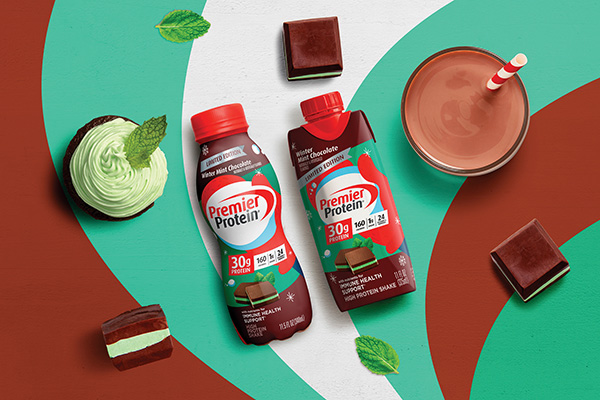Business and Finance
How to Get Rid of Your Debt From Last Year
Last Updated on February 14, 2023 by Daily News Staff
NEW YORK (Newswire.com) – iQuanti: With the holidays coming to a close, it’s time to look ahead and make sure you’re paying off those leftover debts from last year. The APR for personal loans is typically lower than that of credit cards, making this an attractive option for consolidating debt: it will cost less interest overall and can reduce your monthly payments considerably. That said, it’s also crucial to remember that repaying debt responsibly requires discipline: you’ll need to stay organized with budgeting, use proper money-management skills, set short- and long-term goals – and yes, commit to them! Successfully taking control of your finances in this way benefits both your financial health and your peace of mind.
In addition to consolidating debt, this article will discuss how to get rid of your debt from last year. Several options exist. All you have to figure out is which of them makes the most sense for your unique situation.
1. Take Out a Personal Loan
You might consider personal loans if you have several outstanding debts from 2022. Credit unions and banks offer personal loans. Either of these can be reputable entities.
You can take the money from a personal loan and pay off all your outstanding debts. By doing so, you make your repayment schedule less complicated.
You can go from owing several different entities to only owing money to a single one. Many times, it’s that simplification of your repayment schedule that will assist you in becoming debt-free during the new year.
2. Hunt for a Job that Pays More
Looking for a job that pays more in the new year can also get you out from under the debts you accumulated in 2022. Maybe you feel that you’ve reached the limit of what you can achieve in your current position. You don’t see a path to a promotion and a raise that can accompany it.
If that’s true, you can update your resume and look for jobs online. You can use sites like Monster, Indeed, and LinkedIn. If you don’t have a LinkedIn profile yet, you should create one.
Getting a job that pays more will free up more money that you can use to pay off your debts from 2022 quicker. Don’t rest until you find a new position that pays you a salary that matches your skill set. Being complacent at your current job isn’t going to help you if you’re sure there’s no raise or promotion in your immediate future.
3. Don’t Accumulate Any More Debt
You can also work on paying off what you owe from last year without accumulating any new debt. Often, debt piles up because you keep accruing new debts before you can pay off your existing ones. If that’s happening, it’s a sure sign you need to curb your spending.
Don’t live an extravagant lifestyle. Limit the number of times you go out to dinner. Instead, buy bulk food items and use them to make low-cost meals. Purchase clothing at second-hand stores like Goodwill instead of buying them brand new. If you can put off shopping for new clothes, do that.
If you need a new vehicle, get a used or certified pre-owned one instead of buying the latest model. Only spend money on home improvements if they’re unavoidable.
Conserving money in all these ways will let you put the cash you’ve saved toward paying off your 2022 debts. If you’re determined and don’t mind living this way for a while, you should see positive results.
You Can Get Rid of Last Year’s Debt
Getting rid of last year’s debt can be challenging, but you can do it if you’re determined. You can save money to put toward debt from 2022 by living frugally. Eating in restaurants less often, shopping for second-hand clothing, and taking similar measures leaves you more money to put toward your outstanding debts.
Hunting for a new job that pays more is another viable option. Spruce up your resume and look for jobs on sites like Indeed, LinkedIn, and Monster. You may also consider taking out a personal loan and using the money from it to pay off all your other outstanding debts. Having one creditor to pay back will simplify the process.
These tips should help you get rid of last year’s debt. It may not be easy, but it’s always possible.
Source: iQuanti
Discover more from Daily News
Subscribe to get the latest posts sent to your email.
Lifestyle
Preparing for the Future of Work: Tips to help teens choose a career path
Preparing for the Future of Work: American teens are optimistic about their careers despite concerns over AI’s impact. Many value internships and real-world experience over degrees, and are weighing passion against pay, seeking balance in their future career choices.
Last Updated on December 2, 2025 by Daily News Staff
Preparing for the Future of Work: Tips to help teens choose a career path
(Family Features) American teens are preparing for a workforce shaped by AI, new approaches to education and economic uncertainty. While challenges are real, optimism remains high.
In fact, 94% of teens said they are optimistic about their future careers, reflecting a strong sense of hope and ambition, according to research from Junior Achievement and Citizens. The two organizations have partnered for more than 18 years to advance financial empowerment nationwide, with the bank allocating funding and volunteer support, including more than $630,000 in 2025 to support financial empowerment programs that give people the confidence and tools they need to budget, save, invest and pursue their goals.
However, 57% of teens surveyed believe AI has negatively impacted their career outlook, raising concerns about job replacement and the need for new skills.
“Today’s teens face a rapidly changing world, from the rise of AI to shifts in education and careers,” said Susan LaMonica, chief human resources officer at Citizens. “The survey shows they know the importance of adaptability and continuous learning.”
To help teens build skills for emerging roles and navigate their futures, consider these tips from the experts at Junior Achievement, the world’s largest organization dedicated to giving young people the knowledge and skills they need to own their economic success, plan for their futures and make smart academic and economic choices.
Explore Internships
Success depends on more than credentials alone. Survey respondents believe networking (50%) and internships (41%) are keys to future success. What’s more, 56% believe real-world experience is more valuable than a four-year degree. Internships can provide that experience and allow students to test their interest in a field while building their professional networks, developing skills that can be applied to a range of career paths, identifying strengths and weaknesses and clarifying future goals.
Consider Post-High School Education
Teens’ perspectives on education reflect their uneasiness. Only 40% of teens surveyed believe a four-year degree is always a good investment. At the same time, about 6 in 10 believe a bachelor’s or graduate degree is still necessary for their chosen profession, which shows how complicated these decisions can be. While many careers require a college diploma, that isn’t the only path to career success. In addition to traditional four-year universities, consider alternate education paths such as trade schools or technical programs, apprenticeships, two-year degree programs or professional certifications if applicable to your career path.
Weigh Passion Against Pay
While most teens surveyed (63%) said they would prefer a good-paying job even if it comes with stress, many are weighing passion against pay as they explore career opportunities. In fact, some top industries in which teens plan to pursue a job include health care and life sciences (30%), arts and music (27%) and content creation and digital media (25%), further showcasing that willingness. Many students are also exploring less traditional routes to build security and opportunity, with 87% expecting to earn extra income through side hustles, gig work or social media content creation.
“The data illustrates how the stressors on young people are compounding year after year,” said Tim Greinert, president of Junior Achievement USA. “It also shows how resilient and savvy students are these days in terms of understanding the world around them and deciphering the best path to the future that’s best for them.”
To learn more about preparing for future success and find full survey results, visit JA.org/FutureOfWork.
Photo courtesy of Shutterstock
SOURCE:
STM Daily News is a vibrant news blog dedicated to sharing the brighter side of human experiences. Emphasizing positive, uplifting stories, the site focuses on delivering inspiring, informative, and well-researched content. With a commitment to accurate, fair, and responsible journalism, STM Daily News aims to foster a community of readers passionate about positive change and engaged in meaningful conversations. Join the movement and explore stories that celebrate the positive impacts shaping our world.
Discover more from Daily News
Subscribe to get the latest posts sent to your email.
Family
Holiday Must-Haves: Make holiday shopping a cinch
There’s nothing quite like the joy of watching a loved one’s face light up when opening a gift you selected with care, but holiday shopping can be a chore.
Last Updated on November 28, 2025 by Daily News Staff
(Family Features) There’s nothing quite like the joy of watching a loved one’s face light up when opening a gift you selected with care, but holiday shopping can be a chore.
If you’re a shopper at heart, it may be a challenge you enjoy, but if the idea of holiday shopping brings out the Grinch in you, consider these ideas for gifts to delight those you love this holiday season.
Look for more ideas to make this holiday season magical at eLivingtoday.com.
Power Up Your Holidays with Protein
Whether you’re out shopping or traveling for the holiday, savor the season without compromising health goals by treating yourself to a Premier Protein Winter Mint Chocolate High Protein Shake. Featuring cozy chocolate and refreshing mint flavors, this seasonal favorite is back, but for a limited time only. Flavorful and packed with the nutrition you need, each shake includes 30 grams of protein, 160 calories and 1 gram of sugar. Whether you drink this shake on its own or use it as an ingredient, you can ring in the season with a healthy amount of vitamins C and E, important antioxidants to support a healthy immune system as part of a healthy diet and lifestyle. Learn more at PremierProtein.com.
Holiday Sweets for a Good Cause
Few things go together like the holiday season and sweet treats. By gifting family and friends Wendy’s Frosty Key Tags, which are good for a free Jr. Frosty with every purchase, you can give back all year long because proceeds from every tag sold helps the Dave Thomas Foundation for Adoption find loving, adoptive homes for children in foster care. Available for purchase every November and December, tags are good for one full year and can be purchased in-restaurant, at the drive-thru, via a kiosk, through the app or at Wendys.com.
Step Up Gifting with Fashion-Forward Footwear
Every fashionista knows there’s no such thing as too many shoes, and that includes ankle boots and booties that never go out of style. These low-slung styles can be dressed up or down, depending on the look you’re wearing. Among this season’s hottest designs are faux animal prints, such as cheetah or snakeskin, that add some playful color and texture to complete an ensemble. If you’re not sure about the color or style, a classic black or brown bootie with well-padded soles and a moderate heel is a versatile choice with universal appeal.
Brrr-ing Gifts of Warmth and Good Cheer
Give loved ones an easy way to brighten a cold, dreary day with a cute and cozy matching hat and glove set. It’s a thoughtful and practical gift that brings a smile to recipients’ faces each time they don those warm layers to face a blustery day. What’s more, with all the options for personalization, it’s an affordable way to show you care. When choosing the perfect duo, keep your loved ones’ tastes and preferences in mind. You can find hats and gloves to match virtually any interest, whether it’s a favorite color, sports team or pop culture reference.
Holiday Shopping Hot List
Turns out, Santa may be onto something. Making your list and checking it twice can help you save money (and your sanity) during the holiday season.
- Set a budget and stick to it. Remember to include all your seasonal expenses, including Secret Santa and teacher gifts, ingredients for dishes you’ll take to potluck gatherings and admission to special holiday activities.
- Make a list. Having an idea of what you’d like to buy can help you stick to your budget and avoid frustration when you’re in the stores. You’ll be more likely to avoid costly impulse purchases and you’ll be more efficient while shopping. If you can, jot down a couple of backup ideas just in case what you want proves hard to find or exceeds your budget.
- Shop for deals. Before you head out shopping, research specials on the items on your list. You may be able to adjust your timing to take advantage of sales or find steep discounts at stores you don’t normally visit.
- Give yourself plenty of time. If holiday shopping stresses you out, it’s a good idea to start early. That way you can tackle a little at a time and avoid feeling the pressure of a ticking clock. Also try shopping during off-peak hours, such as during the week, when stores are likely to be less crowded.
- Map out your plan of attack. Planning the most direct route to travel from one retailer to the next can help keep you organized and avoid unnecessary backtracking. You can also save time and gas by making purchases online. Be sure to watch for promotions that provide free shipping and be conscious of shipping times to ensure gifts arrive in time for the big day.
Photo courtesy of Getty Images (couple with gifts)
Photos courtesy of Unsplash (boots and hats)
SOURCE:
Premier Protein
Wendy’s
Discover more from Daily News
Subscribe to get the latest posts sent to your email.
Consumer Corner
The Rise and Evolution of Cyber Monday
Cyber Monday: The online shopping extravaganza that offers incredible deals and convenience for savvy shoppers. #CyberMonday
Last Updated on November 28, 2025 by Daily News Staff

Cyber Monday, the digital shopping extravaganza, has emerged as the Internet’s response to Black Friday. Traditionally held on the Monday after Thanksgiving, it initially aimed to rival the in-store deals of its brick-and-mortar counterpart. However, the retail landscape has evolved, and now both events often overlap. Yet, Cyber Monday retains its allure, with online sales soaring and social media playing a vital role in advertising. The convenience of mobile shopping has further fueled its popularity, allowing people to snag deals on the go. From tech gadgets to clothing and gift cards, Cyber Monday continues to captivate shoppers seeking holiday savings.
Welcome to the Consumer Corner section of STM Daily News, your ultimate destination for savvy shopping and informed decision-making! Dive into a treasure trove of insights and reviews covering everything from the hottest toys that spark joy in your little ones to the latest electronic gadgets that simplify your life. Explore our comprehensive guides on stylish home furnishings, discover smart tips for buying a home or enhancing your living space with creative improvement ideas, and get the lowdown on the best cars through our detailed auto reviews. Whether you’re making a major purchase or simply seeking inspiration, the Consumer Corner is here to empower you every step of the way—unlock the keys to becoming a smarter consumer today!
https://www.nationaldaycalendar.com/national-day/cyber-monday-monday-after-thanksgiving
Discover more from Daily News
Subscribe to get the latest posts sent to your email.

